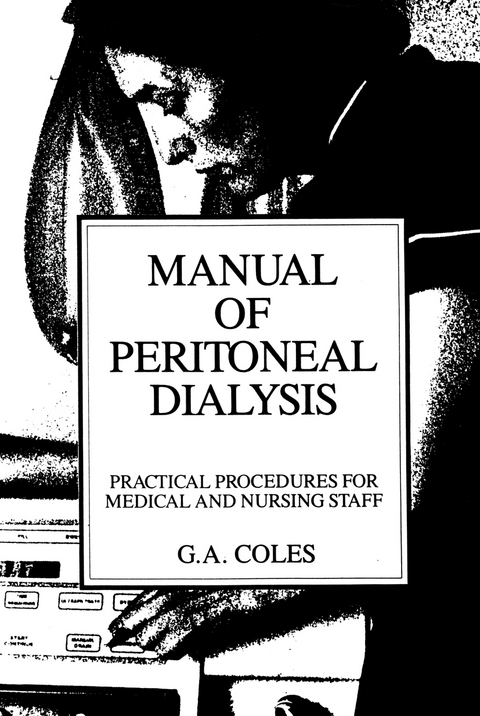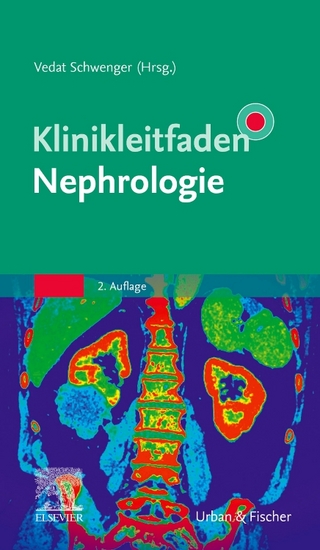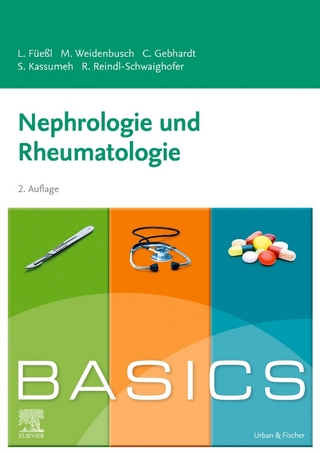
Manual of Peritoneal Dialysis
Kluwer Academic Publishers (Verlag)
978-0-7462-0081-0 (ISBN)
Peritoneal dialysis (PD) is in widespread use for the treatment of acute and chronic renal failure. A considerable amount of knowledge about the various procedures and problems associated with this form of treatment has accumulated over recent years, particularly since the introduction of continuous ambulatory peritoneal dialysis (CAPD). However to date the information regarding the more technical or practical aspects of PD has been largely scattered in various books and journals. There appears to be no straightforward text concerned with these points suitable for recommending to junior doctors or nurses dealing with patients receiving this therapy. Though in-house-training is of considerable value it takes time and I have noticed that on a number of occasions in our own unit, technical problems with PD have not been dealt with quickly because of lack of knowledge in the staff on duty. There thus appeared to me to be a need for a short book giving firm advice on how to perform the various procedures and how to deal with problems as they arose. This manual is an attempt to fulfil that aim. Initially it was tried and tested on the renal unit in the Cardiff Royal Infirmary for 3 years. Prior to publishing it has been extensively revised and updated.
Section A — Temporary Peritoneal Dialysis.- Choice of cannula.- Trolley setting for cannulation.- Cannulation for the nurse.- Insertion of cannula.- Removal of old cannula.- Cannula replacement.- Daily dressing.- Special nursing care.- Bag change.- Emptying drainage bag.- Cannula disconnection.- Cannula reconnection.- Bloodstained fluid.- Haematoma of abdominal wall.- Perforated bladder.- Perforated bowel.- Pain in the abdomen.- Fluid will not run in.- Fluid is slow running in.- Fluid will not run out.- Fluid is slow to run out.- Flushing cannula.- Use of urokinase.- When to sample.- Sampling of fluid.- Crusting around cannula.- Redness around cannula.- Infection around cannula.- Leakage from old site.- Leakage around cannula.- Leakage from tubing or cannula.- Cannula disappears.- Cannula moves out.- Cloudy fluid.- Peritonitis.- Antibiotic dosage.- Notes on aminoglycosides.- Prophylactic antibiotics.- Faeculent fluid.- Multiple organisms.- False positive cultures.- Fluid balance assessment.- Fluid removal.- Failure to remove excess fluid.- Oedema of abdominal skin.- Oedema of genitalia.- Dehydration.- Hypotension.- Hypertension.- Ascites.- Hypoalbuminaemia.- Obesity.- Dialysis after laparotomy.- Ileus, obstruction, adhesions.- Colostomy, ileostomy, ureterostomy, conduit.- Abdominal fistulae and drains.- Blood urea does not fall.- Disequilibrium.- Hyperkalemia.- Hypokalemia.- Hyperglycaemia.- Hypercalcaemia.- Chest complications.- Air under diaphragm.- Hernia.- Choice of cycle volume.- Dwell times.- Continuous or intermittent dialysis.- Choice of fluid.- Heating of fluid.- Automatic machines.- Section B — Long-Term Peritoneal Dialysis.- Selection of cannula.- Trolley setting for catheter insertion.- of Silastic catheter set.- Insertion of catheter.- Alternativesites.- Laparoscopic placement.- Dialysis after catheter insertion.- Alternative procedure.- Exit site care.- Cannula removal.- Replacing catheter.- Pre-peritoneal placement.- Changing the bag — general.- Changing the bag — (Baxter spike system).- Alternative bag change — (Baxter system II).- Baxter UVXD bag change.- O set bag change.- Freeline.- Changing the tubing.- CAPD line change (Baxter system).- Choice of tubing.- Adding medication to CAPD fluid.- Sampling.- Use of heparin.- Fibrin in fluid.- Flushing cannula.- Use of urokinase.- Pain in abdomen.- Bloodstained fluid.- Yellow or orange fluid.- Leakage of fluid.- Fluid leaks through the vagina.- Crusting around cannula.- Cuff erosion.- Exit site infection.- Tunnel infection.- Cannula appears through skin.- Cloudy fluid.- Peritonitis.- Relapsing peritonitis.- Antibiotic dosage.- Presence of cells in the dialysate.- Contamination accidents.- Cracked or distorted connecter.- Split cannula.- Re-use of catheter components.- Fluid will not run in.- Fluid will not run out.- Rotation of a faulty catheter position.- Cannulogram.- Fluid balance.- Failure to remove excess fluid.- Hydrothorax.- Oedema of abdominal wall or genitalia.- Hypotension.- Hypertension.- Dialysis with a stoma.- Peritoneal adhesions and sclerosis.- Insertion via laparotomy.- Dialysis after laparotomy.- Hypokalemia.- Obesity.- Lack of subcutaneous fat.- Backache.- Temporary stopping.- Hernia.- Baths, showers, swimming.- Use of insulin.- How many cycles?.- Choice of volume.- Choice of antiseptic.- Heating the fluid.- Suggested Further Reading.
| Erscheint lt. Verlag | 31.5.1988 |
|---|---|
| Zusatzinfo | 4 Illustrations, black and white; 128 p. 4 illus. |
| Verlagsort | Dordrecht |
| Sprache | englisch |
| Maße | 155 x 235 mm |
| Themenwelt | Medizinische Fachgebiete ► Innere Medizin ► Nephrologie |
| ISBN-10 | 0-7462-0081-1 / 0746200811 |
| ISBN-13 | 978-0-7462-0081-0 / 9780746200810 |
| Zustand | Neuware |
| Haben Sie eine Frage zum Produkt? |
aus dem Bereich


